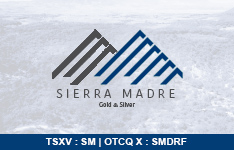Lexeo Therapeutics Inc. (LXEO:NASDAQ) announced new progress in its discussions with the U.S. Food and Drug Administration (FDA) regarding an Accelerated Approval pathway for LX2006, its investigational gene therapy for Friedreich ataxia (FA) cardiomyopathy. The company also released interim clinical data from ongoing Phase I/II trials showing sustained or deepening improvements in both cardiac and neurological measures among participants. FA cardiomyopathy is a life-threatening cardiac condition associated with Friedreich ataxia, which affects approximately 5,000 people in the United States and for which there is no disease-modifying treatment.
According to R. Nolan Townsend, Chief Executive Officer of Lexeo Therapeutics in the announcement, "We are encouraged by our recent dialogue with the FDA on LX2006, and we appreciate the Agency's collaborative spirit as we work to deliver a potentially life-changing therapy to the FA community." He added that the new data and regulatory feedback could allow for a smaller pivotal study by enabling the pooling of data from ongoing Phase I/II studies with future pivotal results.
In its latest communication, the FDA indicated openness to a Biologics License Application (BLA) for Accelerated Approval that combines clinical data from ongoing Phase I/II studies with data from the planned pivotal trial. The agency also agreed to assess one of the co-primary endpoints — left ventricular mass index (LVMI) — at a time point earlier than 12 months. LVMI measures the thickness of the heart's main pumping chamber and is an important marker of cardiac function and mortality risk in FA. Participants with abnormal baseline LVMI achieved an average 18% reduction at six months and 23% at 12 months, surpassing the FDA-aligned threshold of a 10% reduction.
Lexeo reported that treatment with LX2006 has been generally well tolerated, with no Grade 3 or higher serious adverse events. Secondary cardiac and neurological outcomes also showed positive trends, including reductions in high-sensitivity troponin I, a biomarker of cardiac injury, and improvements on the modified Friedreich Ataxia Rating Scale (mFARS), which measures neurological function. Interim results showed that 11 of 16 participants improved or stabilized relative to baseline across mFARS assessments.
LX2006 uses an adeno-associated virus (AAV)-based platform to deliver a functional frataxin gene, restoring mitochondrial function in heart muscle cells. The therapy is being studied in the SUNRISE-FA Phase I/II trial and a parallel investigator-initiated trial at Weill Cornell Medicine. Lexeo plans to initiate its pivotal study in the first half of 2026, pending final approval of the protocol.
Advances in Genetic Engineering Strengthen the Biotech Landscape
According to a 2025 report from Genetic Engineering Research, the global genetic engineering market was valued at approximately US$1.7 billion in 2024 and was projected to reach about US$3.1 billion by 2034, representing a compound annual growth rate of 6.2%. North America accounted for more than 42% of global revenue, driven by advances in molecular biology and increased funding for genetic medicine.
The report stated that "gene therapies, engineered cell lines, and genetically modified organisms continue to gain regulatory and commercial momentum," supported by innovations in genome manipulation and precision diagnostics. It added that growing collaboration among research institutes, biotechnology companies, and pharmaceutical developers had encouraged the creation of new therapeutic platforms and delivery mechanisms for genetic medicines.
H.C. Wainwright & Co., analyst Mitchell S. Kapoor raised the price target for Lexeo Therapeutics to US$15 per share from US$9 and reiterated a Buy rating, citing stronger regulatory alignment and risk mitigation following discussions with the U.S. Food and Drug Administration.
The report also noted that the gene splicing segment, which includes techniques such as CRISPR-based genome editing, held a major share of 54.7% of the market due to its application in correcting genetic disorders and producing therapeutic proteins.
It explained that improvements in splicing precision and efficiency had made this technology a preferred approach in clinical and research biotechnology.
Additionally, the medical applications segment represented the largest share of the market at 52.6%, reflecting the expanding use of gene-based therapies and diagnostics in hospitals and research centers. Increased funding from government agencies and private investors was reported to have strengthened the pipeline of gene therapy programs addressing rare and chronic diseases.
By September, Investing News Network wrote that genetics investing had become an essential component of the life sciences sector, encompassing DNA sequencing, genetic testing, gene therapy, and genomics. The outlet explained that "gene therapy has provided a launching pad for a number of biotech firms developing and commercializing novel treatments addressing diseases with unmet needs." It reported that the field continued to gain attention due to ongoing regulatory support and the introduction of gene editing technologies like CRISPR, which had reshaped the outlook for treatment of inherited and chronic conditions.
Analysts Cite Strong Regulatory Alignment and Upside Potential
According to an October 7 report from H.C. Wainwright & Co., analyst Mitchell S. Kapoor raised the price target for Lexeo Therapeutics to US$15 per share from US$9 and reiterated a Buy rating, citing stronger regulatory alignment and risk mitigation following discussions with the U.S. Food and Drug Administration.
The analysts stated that "formal FDA alignment makes LX2006 increasingly approvable," noting that the agency's agreement to allow pooled Phase I/II and pivotal data, as well as an earlier left ventricular mass index (LVMI) assessment, strengthened the accelerated approval pathway.
They also wrote that "durability and safety remain best-in-class among systemic adeno-associated viral vector programs," emphasizing that the therapy's cardiac and neurological improvements persisted beyond 12 months with a favorable safety profile. The firm's discounted cash flow analysis valued Lexeo at approximately US$1.23 billion, and the analysts concluded that the company represented "one of the clearest gene therapy regulatory risk/reward setups ahead of the pivotal trial start."
On October 8, Oppenheimer & Co. maintained an Outperform rating and set a 12–18-month price target of US$20 per share, citing continued progress with LX2006 and encouraging feedback from the FDA. Analyst Leland Gershell wrote that the "announcement of a faster path forward in Friedreich's ataxia — complemented by incrementally positive Phase 2 cardiac and neuro updates — increased our conviction that LX2006 will receive accelerated approval for FA-associated cardiomyopathy by 2028." He described the need to show manufacturing comparability as "a check-box item" before the pivotal trial begins in the first half of 2026 and added that the Phase I/II results provided "clear line of sight on success."
Oppenheimer projected that LX2006 could exceed US$1 billion in peak U.S. sales and identified Lexeo as "a leading emerging developer of potentially transformative gene therapies for rare and poorly met cardiac and neurodegenerative diseases."
Pivotal Pathway Poised to Define Genetic Cardiac Therapies
Lexeo Therapeutics' lead program, LX2006, targets the root cause of FA cardiomyopathy by increasing production of frataxin, a protein critical for healthy mitochondrial function. In its October 2025 corporate presentation, Lexeo noted that the FDA's openness to surrogate endpoints and pooled data strategies could shorten timelines for genetic cardiovascular treatments, potentially reducing the need for lengthy outcome trials.
The planned pivotal trial will use Lexeo's high-yield Sf9-baculovirus manufacturing platform, designed to improve scalability and consistency compared to earlier HEK293-based processes. The company reported cash, cash equivalents, and marketable securities of approximately US$153 million as of June 30, 2025, which it expects to fund operations into 2028.
 Streetwise Ownership Overview*
Streetwise Ownership Overview*
Lexeo Therapeutics Inc. (LXEO:NASDAQ)
Beyond LX2006, Lexeo is advancing LX2020, a gene therapy candidate for arrhythmogenic cardiomyopathy caused by mutations in the PKP2 gene. Early data showed increases in PKP2 protein expression and reductions in arrhythmia burden. Together, these programs reflect Lexeo's broader strategy to leverage AAVrh10 delivery technology for cardiac applications, aligning with a growing industry focus on gene therapies for diseases with significant unmet medical needs.
Ownership and Share Structure
According to Refinitiv, 89.36% of Lexeo is held by Institutions. Of those, Frazier Life Sciences Management holds the most at 8.19%, followed by Balyansny Asset Management with 7.42%, and Janus Henderson Investors with 6.92%.
Management and Insiders hold 0.57%. The rest is retail.
Lexeo has a market cap of US$433.63 million with 49.1 million free float shares, and a 52-week range of US$1.45-US$11.72.
| Want to be the first to know about interesting Healthcare Services investment ideas? Sign up to receive the FREE Streetwise Reports' newsletter. | Subscribe |
Important Disclosures:
- James Guttman wrote this article for Streetwise Reports LLC and provides services to Streetwise Reports as an employee.
- This article does not constitute investment advice and is not a solicitation for any investment. Streetwise Reports does not render general or specific investment advice and the information on Streetwise Reports should not be considered a recommendation to buy or sell any security. Each reader is encouraged to consult with his or her personal financial adviser and perform their own comprehensive investment research. By opening this page, each reader accepts and agrees to Streetwise Reports' terms of use and full legal disclaimer. Streetwise Reports does not endorse or recommend the business, products, services or securities of any company.
- This article does not constitute medical advice. Officers, employees and contributors to Streetwise Reports are not licensed medical professionals. Readers should always contact their healthcare professionals for medical advice.
For additional disclosures, please click here.











































